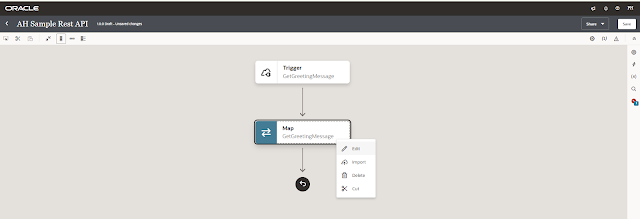Usually this issue occurs when closing the popup window and moving to the next set of data of search results using table navigation bar.
Lets look at the snaps of the issue for reference.
Code which has issue:
String errorPage = "/ah/oracle/apps/aoc/AHOMUI/webui/AHOMErrorsPG&banner=home&addBreadCrumb=Y&ErrorId={@ErrId}";
String destinationURL = APPS_HTML_DIRECTORY + OAWebBeanConstants.APPLICATION_JSP + "?" + OAWebBeanConstants.JRAD_PAGE_URL_CONSTANT + "=" + errorPage;
OALinkBean errorsAdvLink = (OALinkBean)advResultsTabBean.findIndexedChildRecursive("ErrorAdv");
OABoundValueEmbedURL errorAdvJsWindow = new OABoundValueEmbedURL(errorsAdvLink,
"javascript:var win = window.open( '",
destinationURL,
"' , 'win', 'height=600,width=1000,left=80,top=250,status=yes,toolbar=no,menubar=no,location=no,scrollbars=yes,resizable=yes'); win.focus();");
errorsAdvLink.setAttributeValue(oracle.cabo.ui.UIConstants.ON_CLICK_ATTR, errorAdvJsWindow);
To resolve this issue, we need to retain the application module in the popup page.
Solved code:
String errorPage = "/ah/oracle/apps/aoc/AHOMUI/webui/AHOMErrorsPG&banner=home&retainAM=Y&addBreadCrumb=Y&ErrorId={@ErrId}";
String destinationURL = APPS_HTML_DIRECTORY + OAWebBeanConstants.APPLICATION_JSP + "?" + OAWebBeanConstants.JRAD_PAGE_URL_CONSTANT + "=" + errorPage;
OALinkBean errorsAdvLink = (OALinkBean)advResultsTabBean.findIndexedChildRecursive("ErrorAdv");
OABoundValueEmbedURL errorAdvJsWindow = new OABoundValueEmbedURL(errorsAdvLink,
"javascript:var win = window.open( '",
destinationURL,
"' , 'win', 'height=600,width=1000,left=80,top=250,status=yes,toolbar=no,menubar=no,location=no,scrollbars=yes,resizable=yes'); win.focus();");
errorsAdvLink.setAttributeValue(oracle.cabo.ui.UIConstants.ON_CLICK_ATTR, errorAdvJsWindow);












































